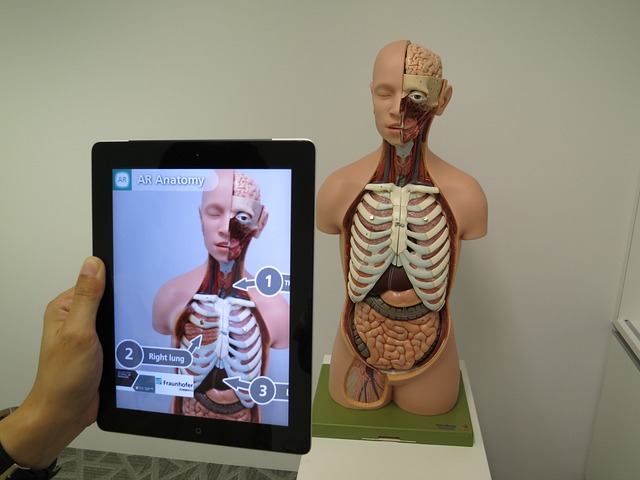Rendering of AR glasses using the Snapdragon AR2 Gen 1 platform
Qualcomm
Despite the technical challenges and lack of economical platforms for augmented reality (AR), the concept still holds huge potential for both commercial and consumer applications. Some, including Tirias Research, even believe that AR devices could be one of the alternative platforms to the rectangular bricks we call smartphones that everyone carries today. Like so many other electronic platforms, making AR a reality requires new technology, new usage models, and new business models that will evolve over a few generations before the entire ecosystem matures enough and price points finally reach a point where AR makes sense for the masses. Tirias Research estimates that this may be five to ten years, but Qualcomm just took a significant step to making this future a reality with the introduction of the company’s first chipset platform designed specifically for the performance, power, and size constraints of AR glasses.
Overview of the 3-chip/module Qualcomm Snapdragon AR2 Gen 1 platform
Qualcomm
On the second day of the Snapdragon Tech Summit, Qualcomm announced the new Snapdragon AR2 Gen 1 platform. The AR2 is significant because it is based on realistic requirements for AR glasses, which includes high levels of compute power and high-speed connectivity, and it recognizes the need for light weight and practical, if not fashionable, design. The Snapdragon AR2 platform partitions the various silicon blocks into three modules that are spaced around the glasses, which allows for sleeker and more comfortable designs. The three modules include an AR processor, an AR coprocessor, and a Wi-Fi connectivity module. The AR processor and co-processor work with a host processor in a smartphone, PC, or even a network to provide a distributed computing architecture complete with the heterogeneous, sensor, and AI processing capabilities native to the Snapdragon platform. The connectivity module leverages Wi-Fi 7 and uses simultaneous, high-band multi-link RF channels to provide up to 5.8Gbps high-speed/high-bandwidth connectivity between the glasses and the processing host (like a smartphone).
Interconnectivity and operation of the Snapdragon AR2 Gen 1 platform with a host processor/platform
Qualcomm
Today, current AR/VR/MR (augmented reality, virtual reality, mixed reality – also referred to as XR) solutions typically use a single SoC for processing and connectivity. While this single-chip solution is optimal for many platforms like smartphones, it is challenging to integrate large SoCs into petite form factors like glasses. Not only does breaking up the platform into multiple components provide for better weight distribution and balance for AR glasses, the Snapdragon AR2 Gen 1 platform also reduces the wiring requirements to the distributed battery and distributed sensors by 45%, printed circuit board (PCB) area by 40%, the processor power consumption by 50%, and the Wi-Fi power consumption by 40% compared to the single-SoC Snapdragon XR2 platform
Summary of the features and benefits of the Qualcomm Snapdragon AR2 Gen 1 platform
Qualcomm
Built on the advanced TSMC 4nm process and optimized for AR processing requirements, the Snapdragon AR2 Gen 1 platform provides a 2.5x increase in Artificial Intelligence (AI) processing compared to the XR2 platform while operating at less than 1W. The AR2 platform also achieves less than a 2ms latency over Wi-Fi and 9ms motion-to-photon latency (the lag between the user making a motion and it being displayed on the display).
The new platform will also leverage Qualcomm’s Snapdragon Spaces XR developer environment, which is built on the OpenXR standards and has been quickly adopted by a broad ecosystem, including AR and VR system OEMs Honor, Motorola, Nubia, OnePlus, Oppo, RedMagic, Sharp, Vivo, Xiaomi, and ZTE. At the Snapdragon Tech Summit, Qualcomm also announced partnerships with Adobe for Universal Scene Description (USD) support, Microsoft for its Mixed Reality Toolkit (MRTK) support, and Niantic for its Lightship toolset support. Both Qualcomm and Niantic also announced AR glasses based on the Qualcomm AR2 Gen 1 platform that serve as developer platforms.
Overview of the Snapdragon Spaces XR developer environment
Qualcomm
One of the key points about the Snapdragon AR2 Gen 1 platform is that it will be paired with a host processing solution. Eventually, that will just be a cloud connection, but in the short-term, the host will likely be a nearby smartphone, PC, or a small, pocket-sized processing solution, often referred to as a puck. While neither Qualcomm nor any of its partners currently offer a small pocket-sized puck device for AR, other than a smartphone, Qualcomm did introduce the Snapdragon Developer Kit, which could serve as a reference design for such a solution.
Sample design and medical AR applications
Qualcomm
Tirias Research believes that technology advances, combined with new usage and business models, will shift mobile personal computing away from smartphones to other form factors, including AR, over the next decade. While there is still much to be done, the efforts by Qualcomm to develop an AR-specific platform and an open developer environment are critical steps toward enabling the industry.



